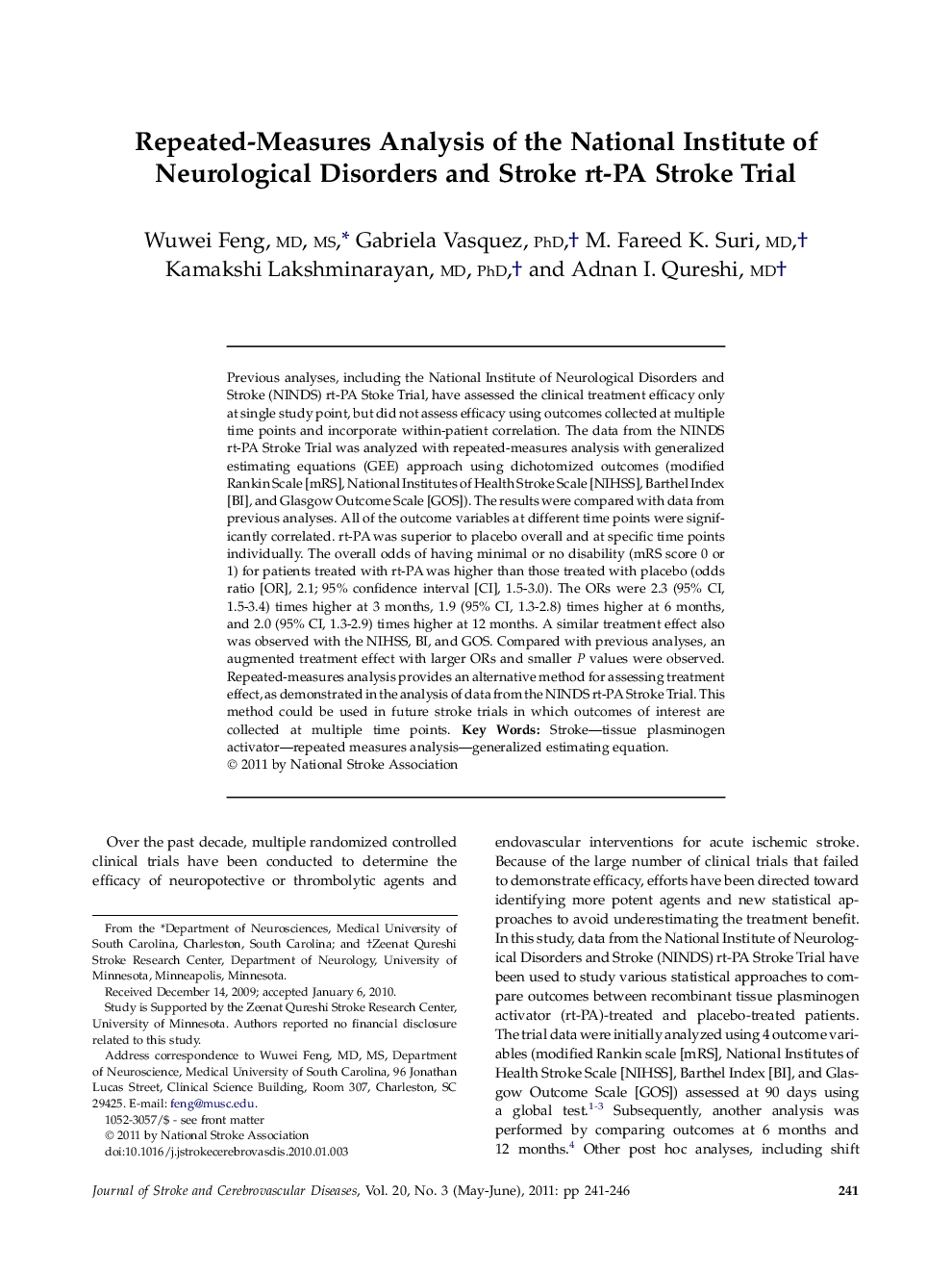| Article ID | Journal | Published Year | Pages | File Type |
|---|---|---|---|---|
| 2704421 | Journal of Stroke and Cerebrovascular Diseases | 2011 | 6 Pages |
Previous analyses, including the National Institute of Neurological Disorders and Stroke (NINDS) rt-PA Stoke Trial, have assessed the clinical treatment efficacy only at single study point, but did not assess efficacy using outcomes collected at multiple time points and incorporate within-patient correlation. The data from the NINDS rt-PA Stroke Trial was analyzed with repeated-measures analysis with generalized estimating equations (GEE) approach using dichotomized outcomes (modified Rankin Scale [mRS], National Institutes of Health Stroke Scale [NIHSS], Barthel Index [BI], and Glasgow Outcome Scale [GOS]). The results were compared with data from previous analyses. All of the outcome variables at different time points were significantly correlated. rt-PA was superior to placebo overall and at specific time points individually. The overall odds of having minimal or no disability (mRS score 0 or 1) for patients treated with rt-PA was higher than those treated with placebo (odds ratio [OR], 2.1; 95% confidence interval [CI], 1.5-3.0). The ORs were 2.3 (95% CI, 1.5-3.4) times higher at 3 months, 1.9 (95% CI, 1.3-2.8) times higher at 6 months, and 2.0 (95% CI, 1.3-2.9) times higher at 12 months. A similar treatment effect also was observed with the NIHSS, BI, and GOS. Compared with previous analyses, an augmented treatment effect with larger ORs and smaller P values were observed. Repeated-measures analysis provides an alternative method for assessing treatment effect, as demonstrated in the analysis of data from the NINDS rt-PA Stroke Trial. This method could be used in future stroke trials in which outcomes of interest are collected at multiple time points.
